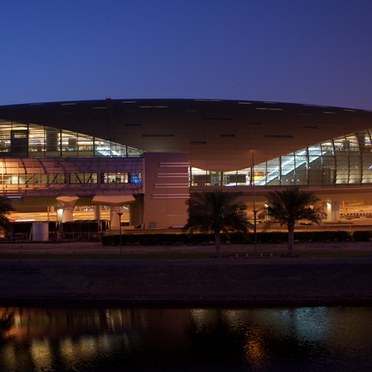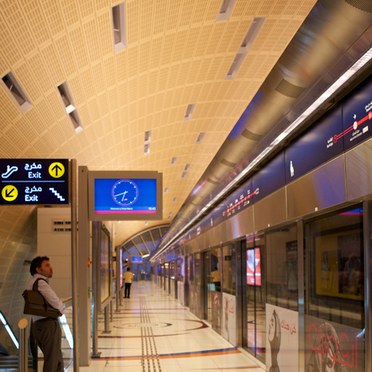Dubai Metro System, UAE
- Lamp efficacy
Lamp efficacy
Ensuring the lamp efficiently converts electricity into light (lm/W).
- Ballast classification
Ballast classification
Controlling the electricity supply to the lamp (Energy Efficiency Index).
- Luminaire distribution
Luminaire distribution
Controlling light emission using optics which bend and shape the light to the correct location.
- System efficacy
System efficacy
Combining optical and thermal control within the luminaire (luminaire lm/W).
- Presence/absence detection
Presence/absence detection
Providing lighting only when it’s needed.
- Daylight detection
Daylight detection
Reducing waste light during daylight hours.
- Constant illuminance
Constant illuminance
Producing the correct lighting levels for the duration of the maintenance period.
- Task-scene setting
Task-scene setting
Allowing the user to set scenes and adapt the lighting to different tasks.
- Timed off
Timed off
Automatic cut-off to turn all lights off during unoccupied hours.
- Task lighting
Task lighting
Lighting task areas with the correct amount of light.
- Zoning of lighting
Zoning of lighting
Zoning lighting in accordance to occupancy patterns or window location.
- Maintenance schedule
Maintenance schedule
Tailoring maintenance schedules in accordance to product age, performance and environment.
- Waste light
Waste light
Eliminating waste light which does not hit the intended target.
- Reflectance
Reflectance
Taking advantage of light which is reflected from the surface within the space.
- Visible smart metering
Visible smart metering
Enabling results of actions to be quickly seen as increased or decreased energy use to encourage responsible energy consumption.
Thorn lights first Gulf metro system
It took 49 months, 30,000 workers and £2.6 billion to build the first metro in the United Arab Emirates city of Dubai. It is 52 km (32 miles) in length, incorporates 29 stations and includes exclusive first-class compartments. The first stretch (Red line) opened in September 2009 and was followed by the Green line in September 2011. Another interesting feature of this transport system is that the trains are entirely unmanned.
Thorn Middle East had been involved from the beginning of the project and stepped up a gear once the award of the contract was given to ETASET.
By working with Atkins, the lead designer responsible for all civil works, and providing both lighting designs and visualisations Thorn was able to supply over 34,000 light fittings. Within the stations 35 different types of light fixtures were used, including over 12,000 downlights, 10,000 Micropak and 3,200 Arrowslim luminaires.


